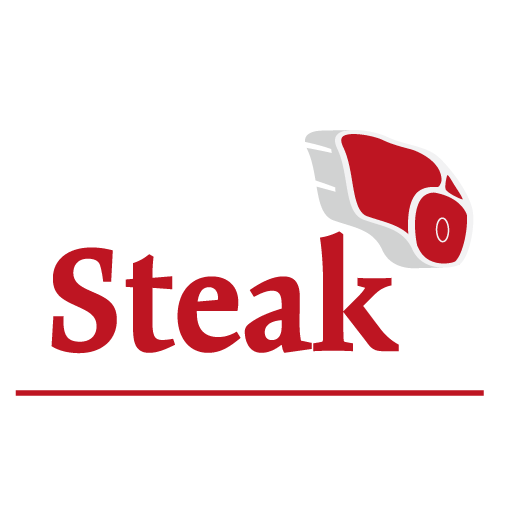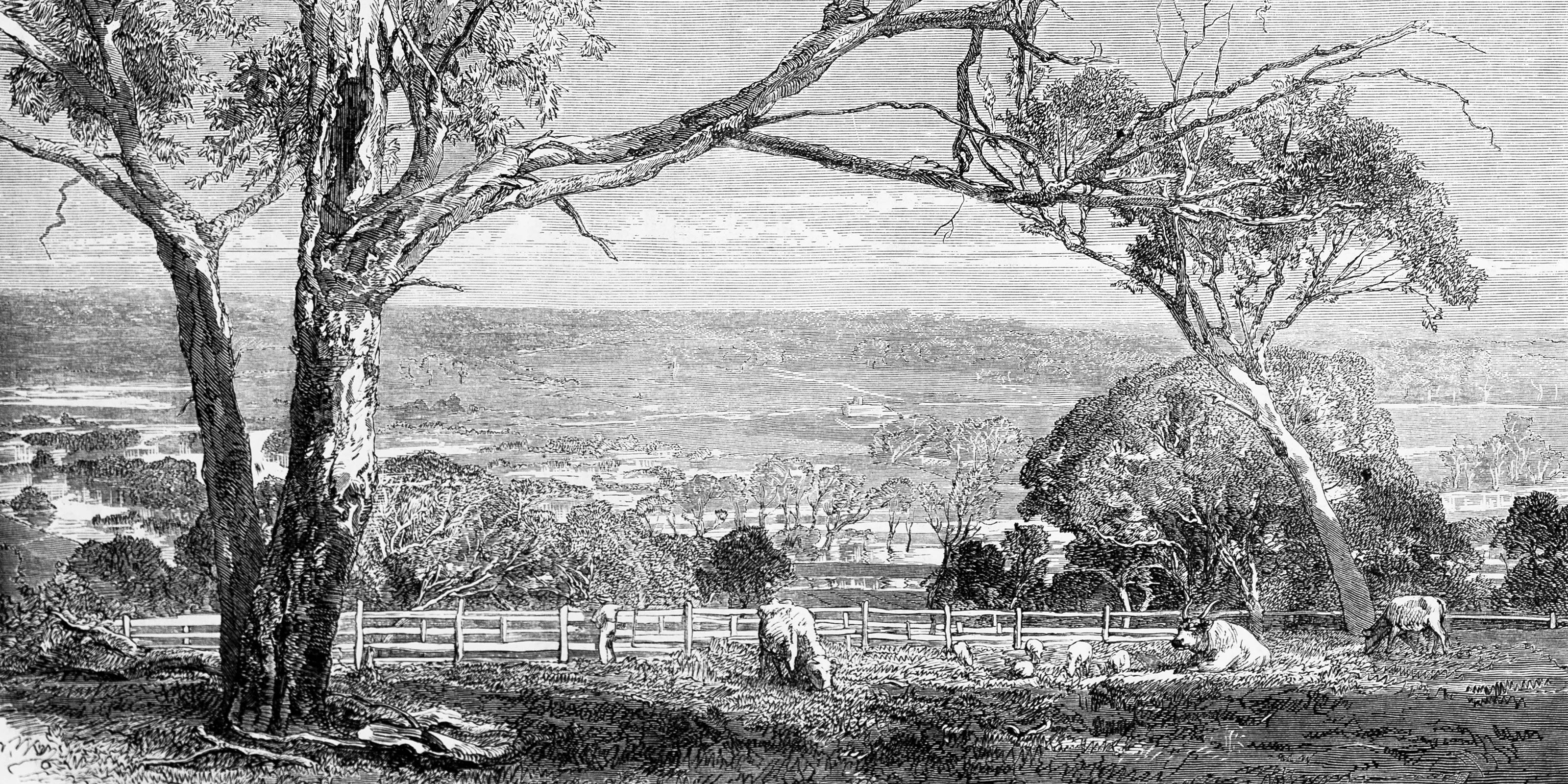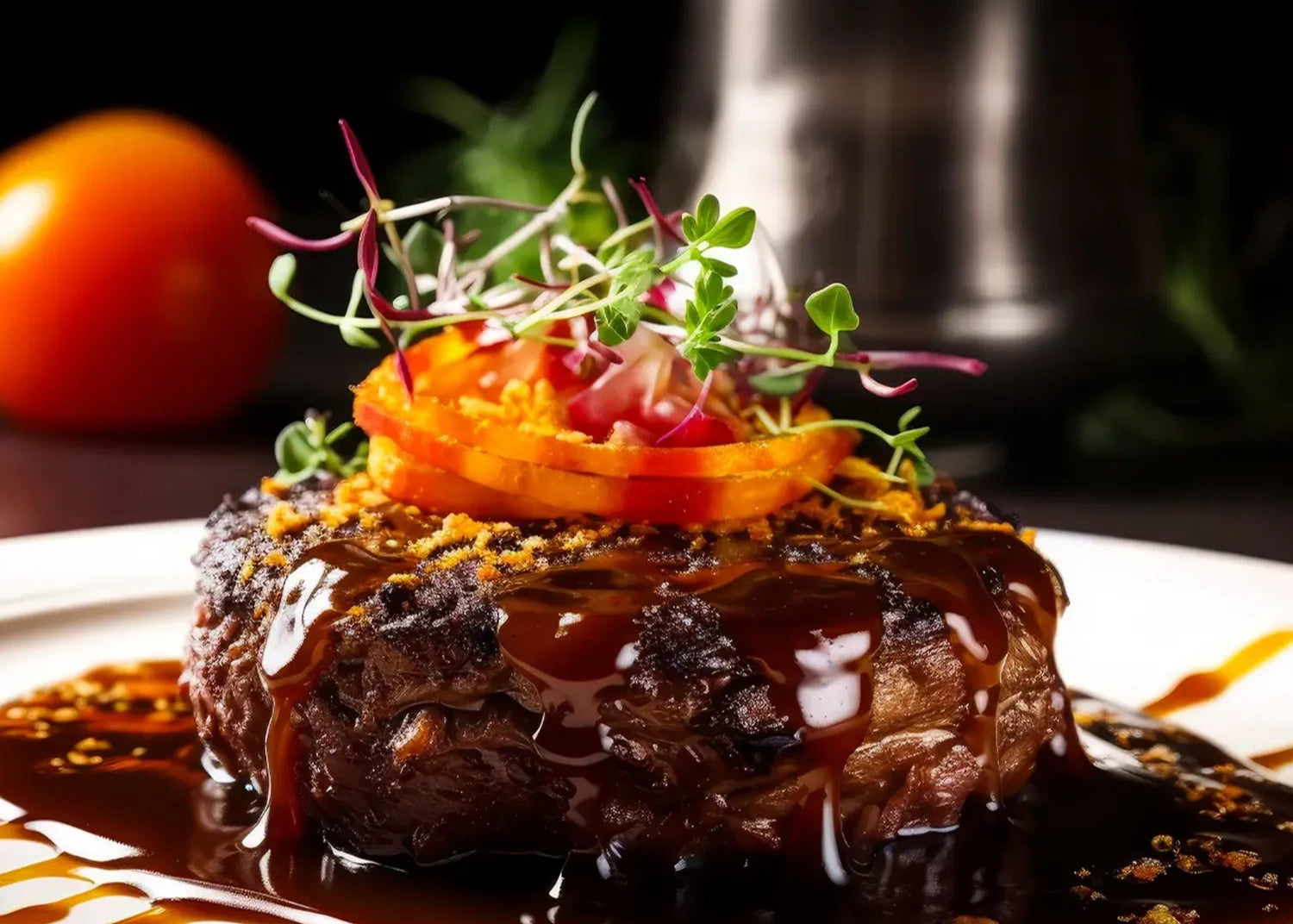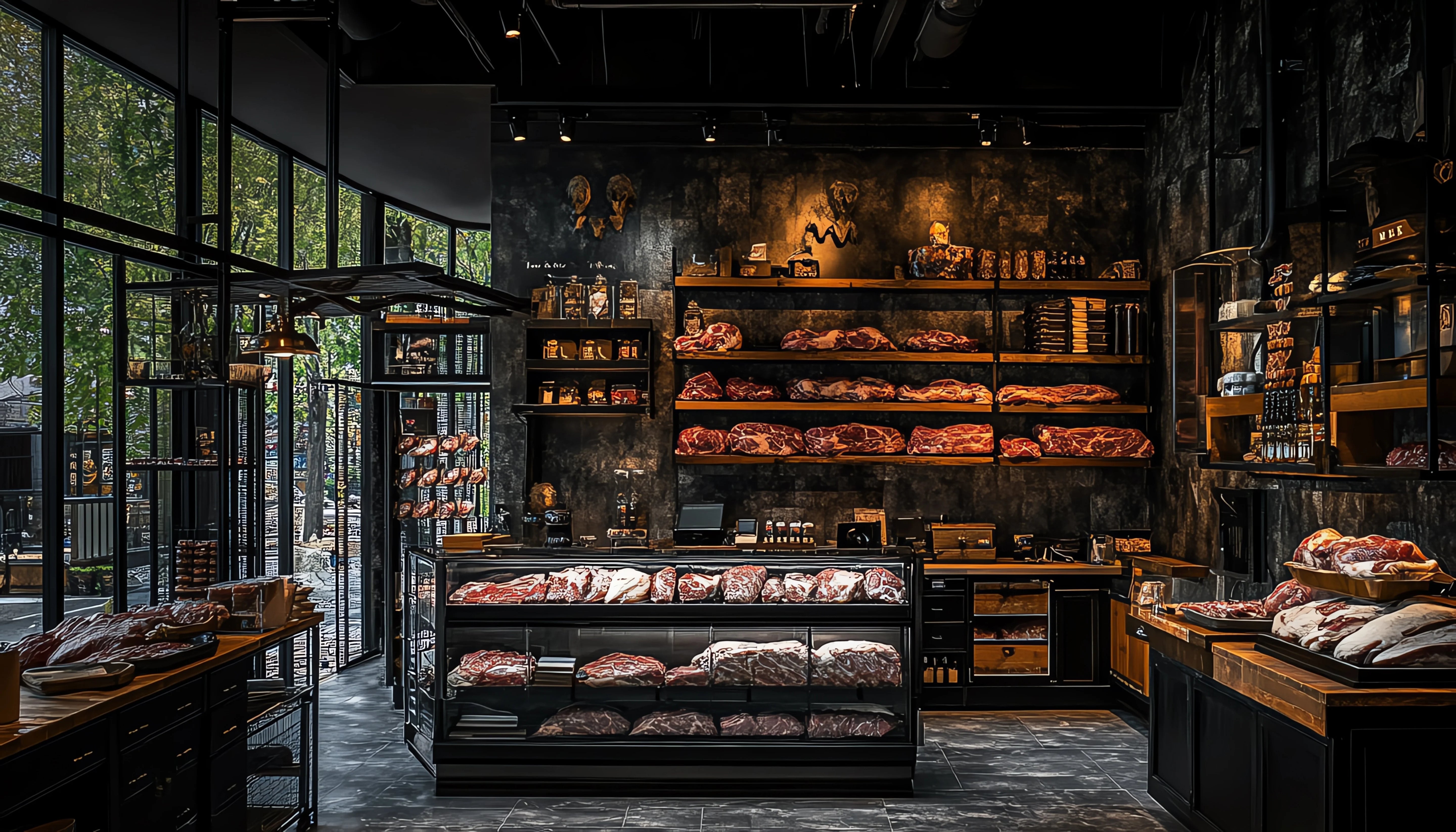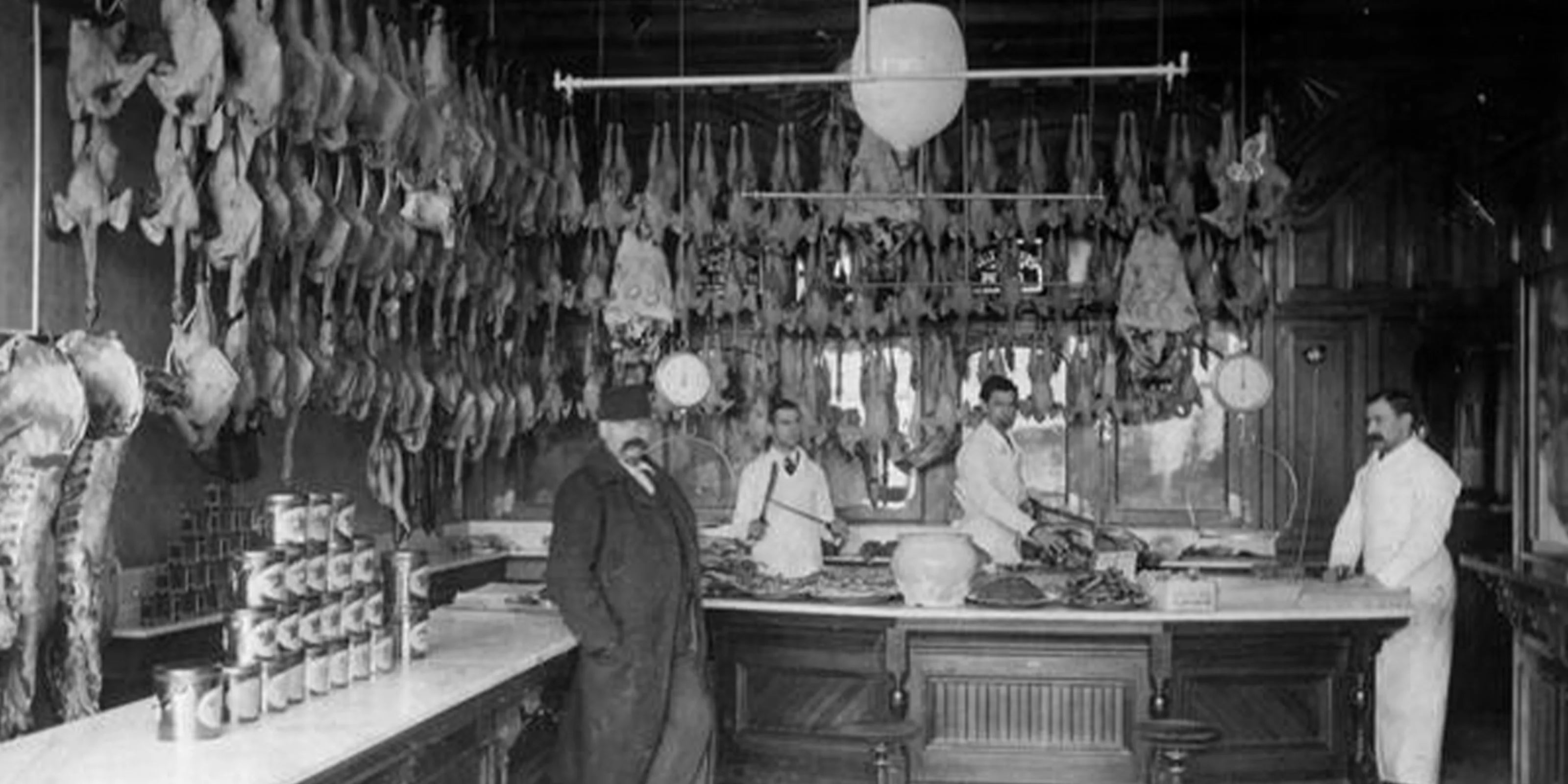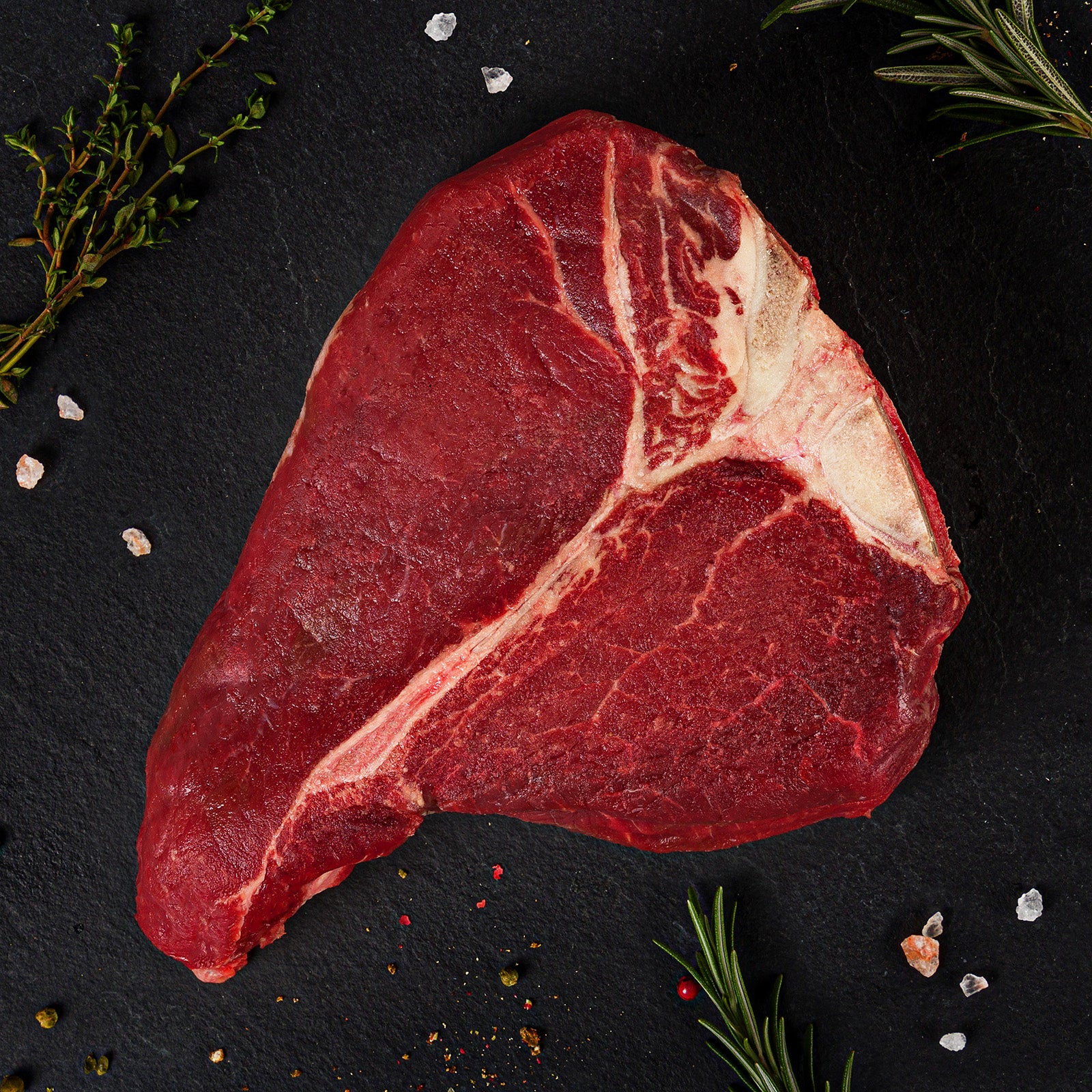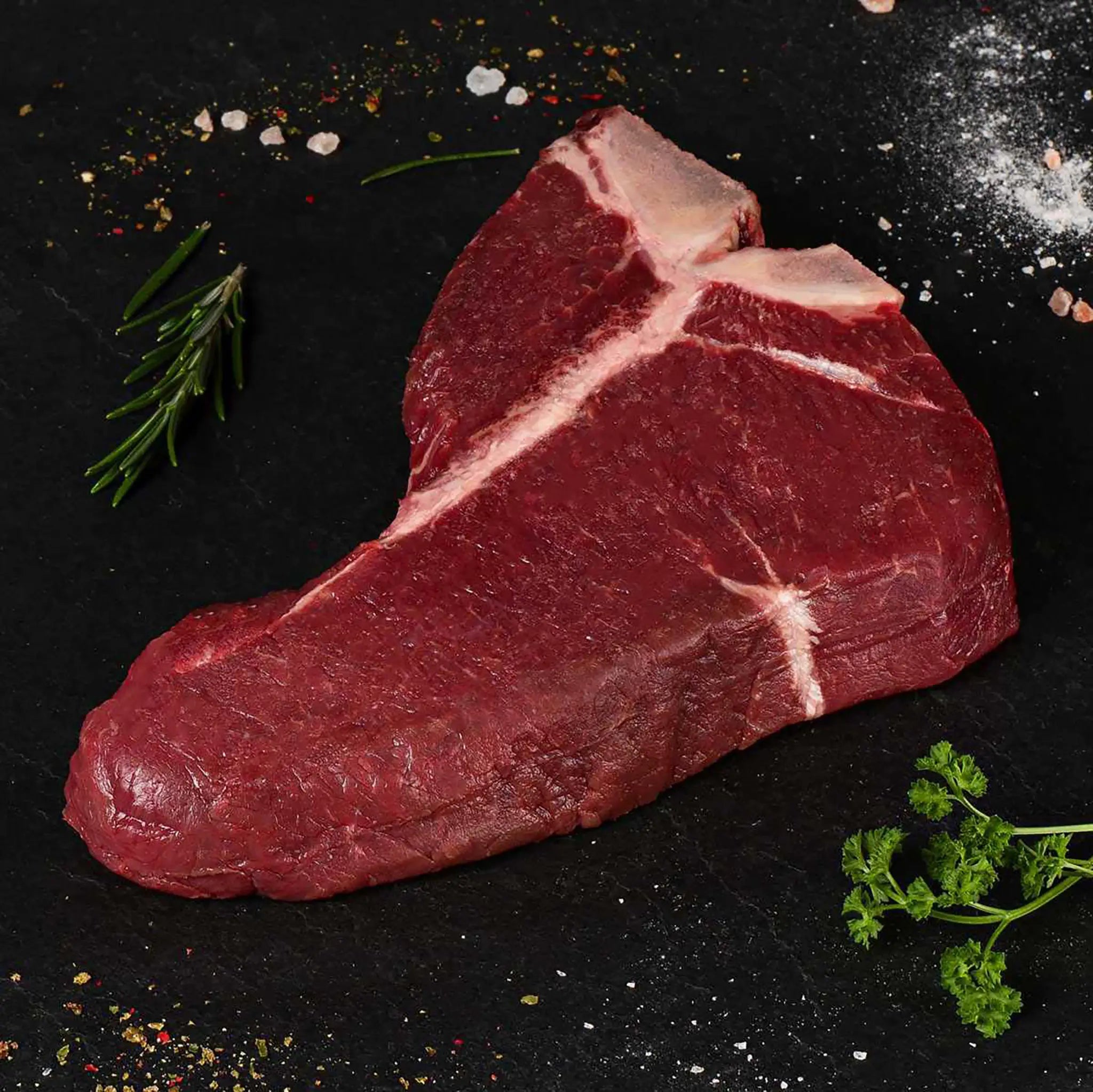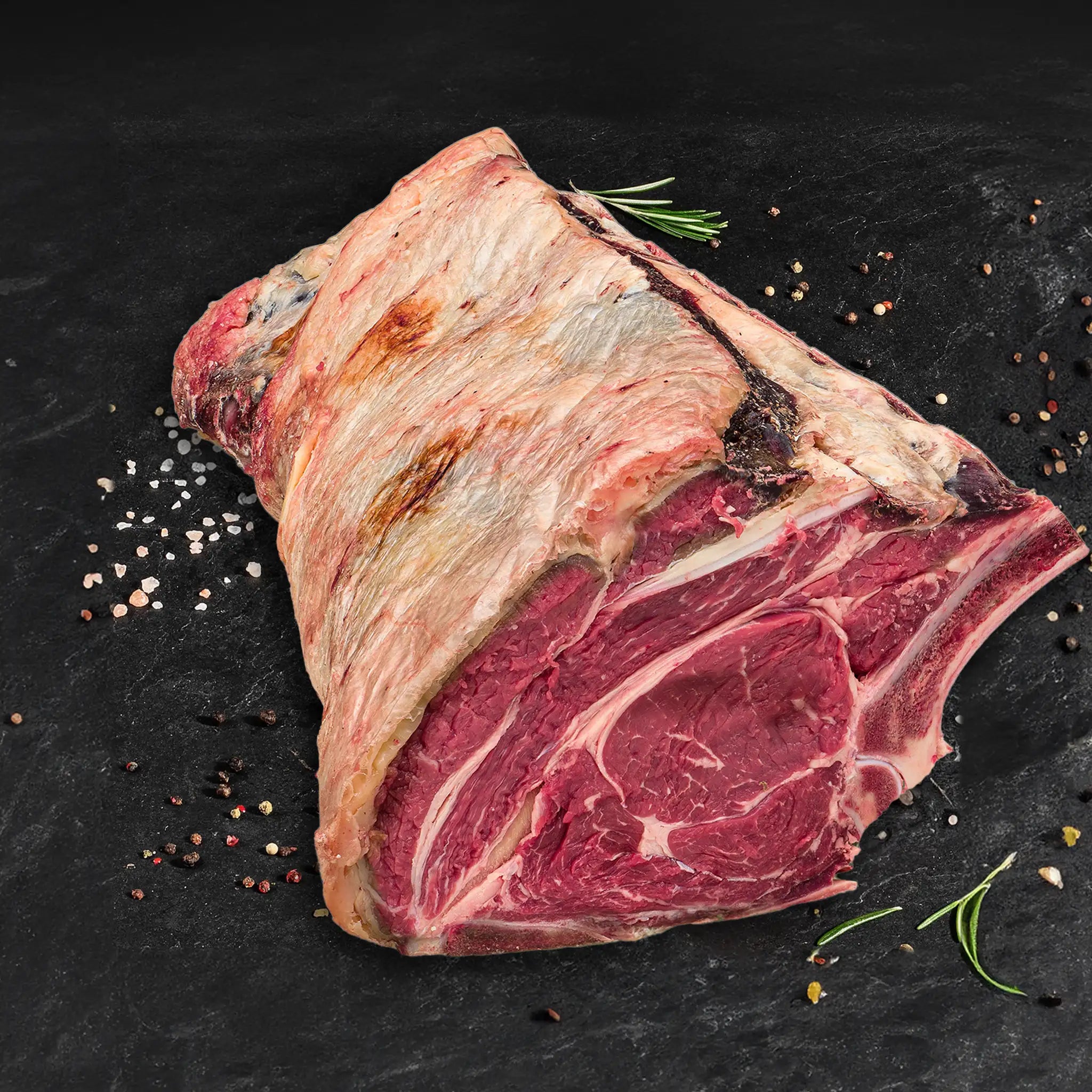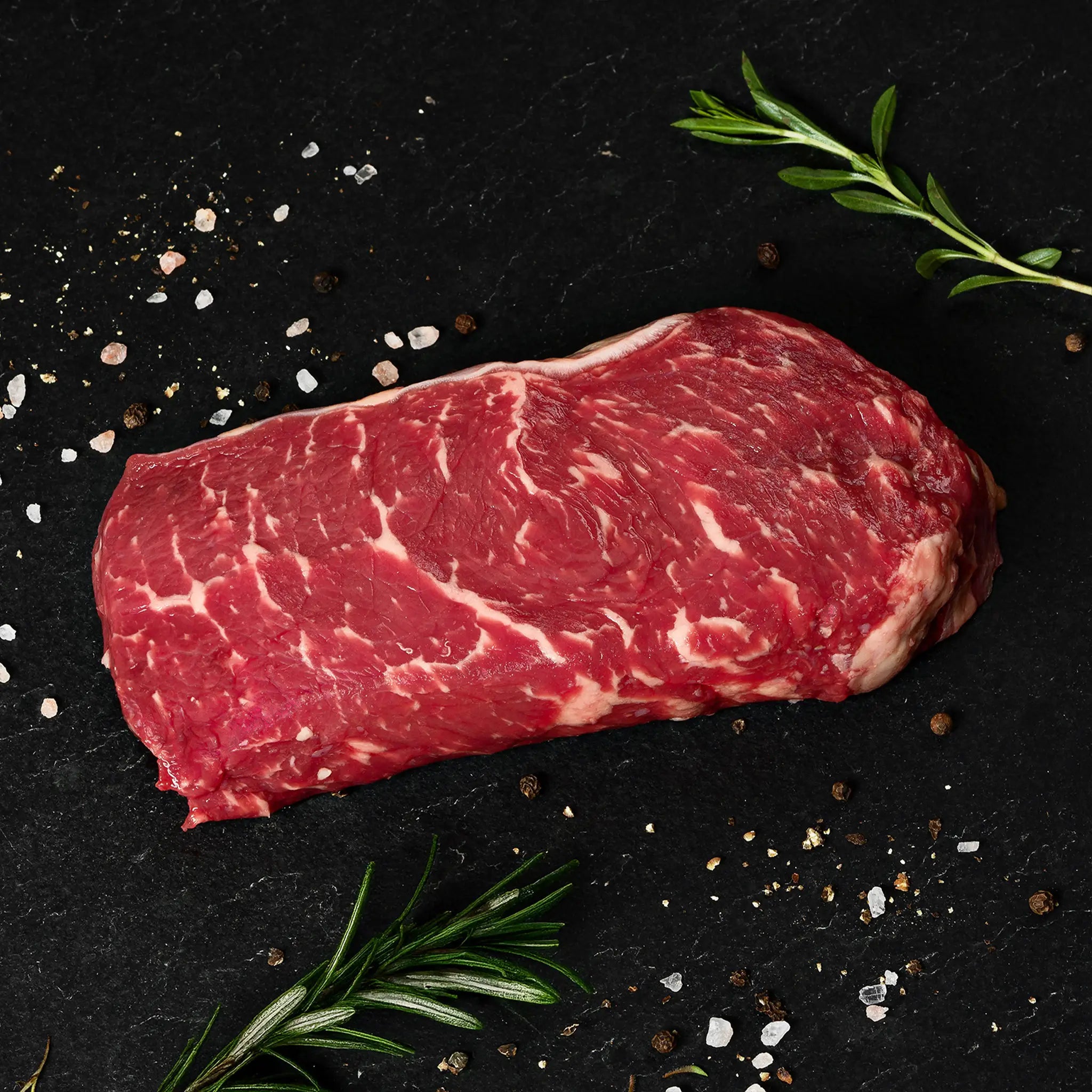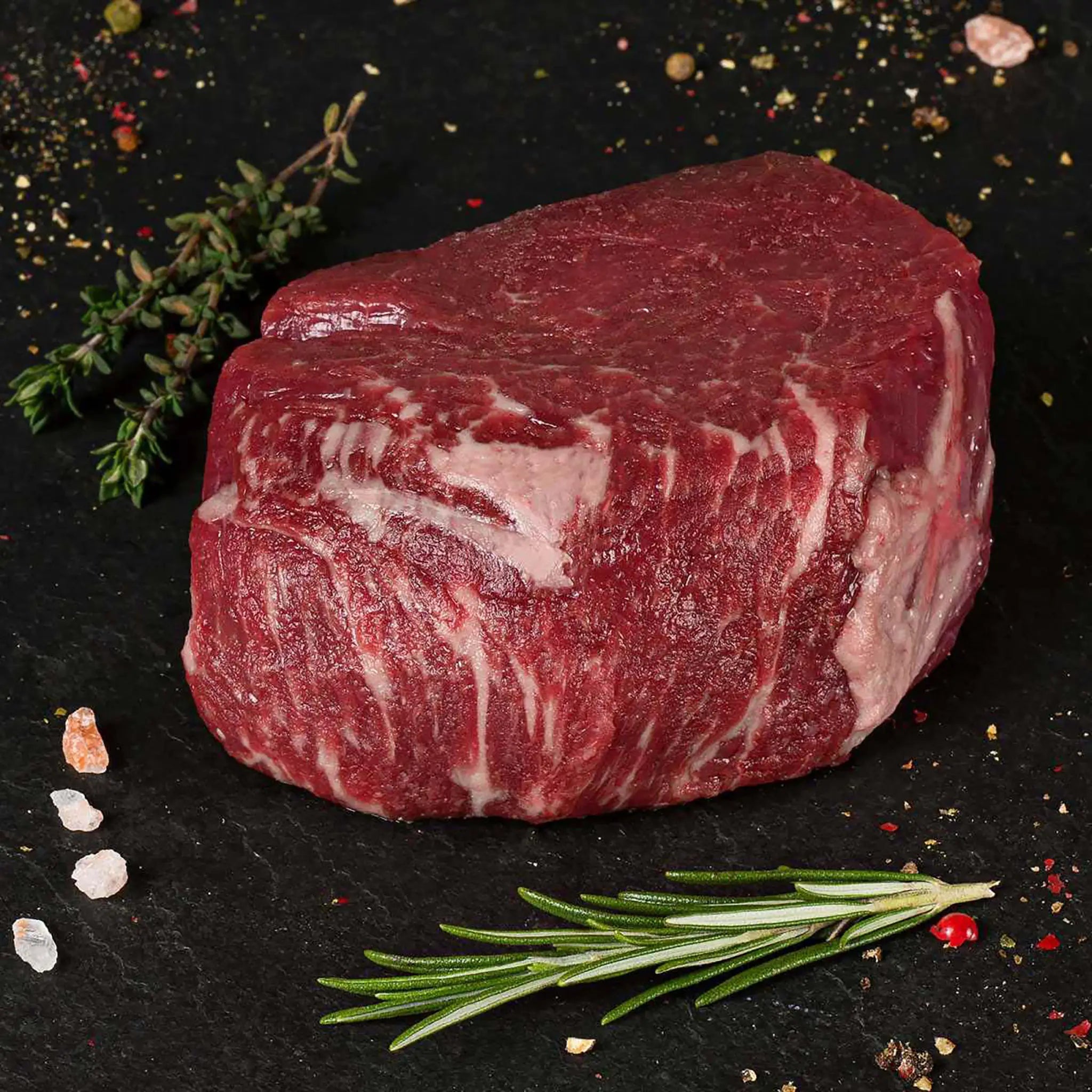Dry aging - a journey through time
Meat was stored to preserve its quality even in ancient times. However, the discovery of dry aging is a relatively modern technique. As a trader discovered that meat stored in their cold storage facilities had improved flavor and texture, the technique was further developed. Dry-aging meat is now a trend in many gourmet restaurants and meat shops. But to truly understand the dry-aging phenomenon, we must step back in time and explore its historical context and origins.
Pre-industrial Age: Necessity and Chance
Long before refrigerators and modern storage methods existed, people had to find ways to preserve meat and prevent it from spoiling.
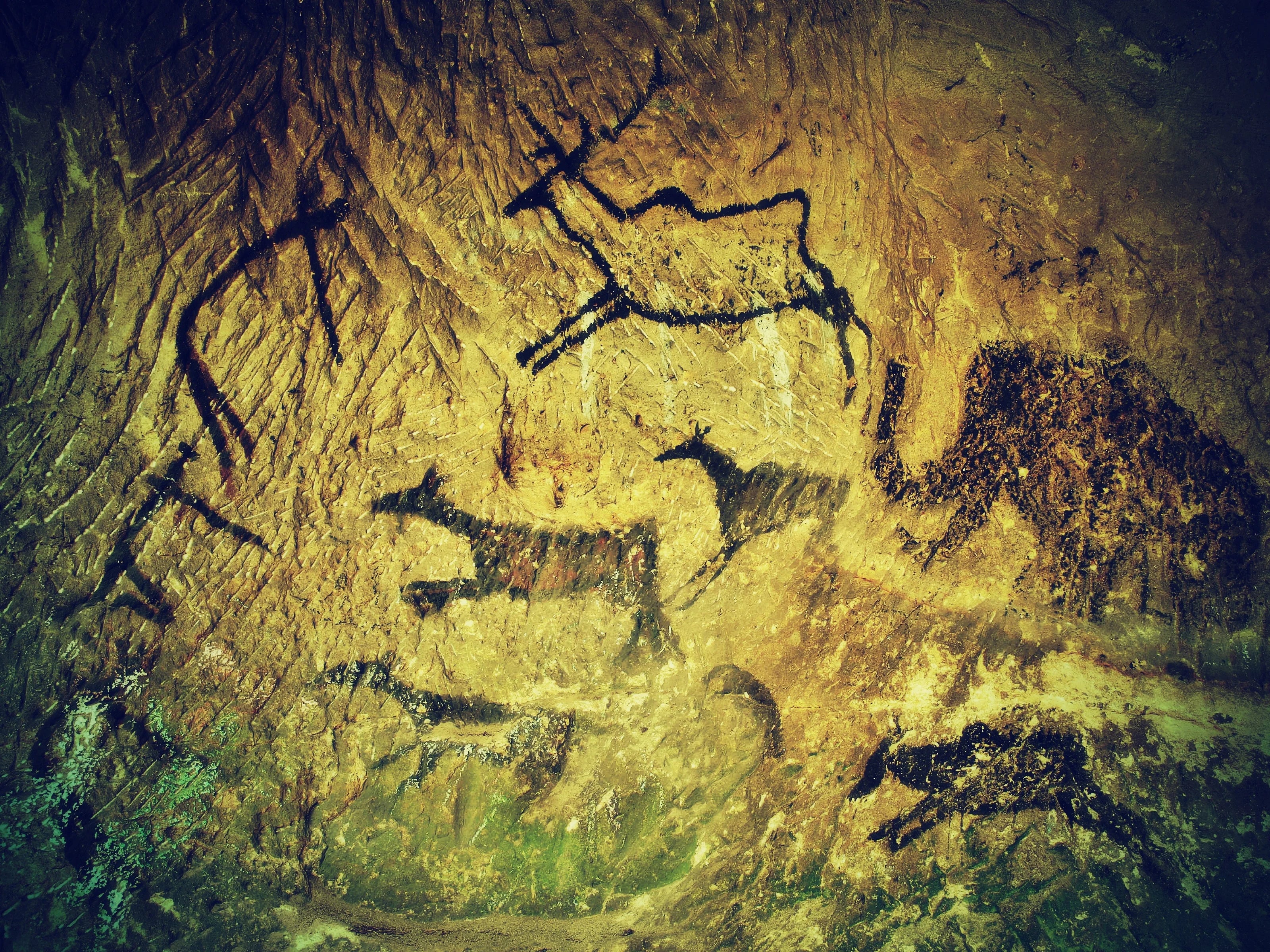
Durability after hunting
Meat has been one of the most important foods throughout human history. In pre-industrial societies, the consumption of meat was often a communal event. A successful hunt for large game promised food for a large group of people for an extended period of time. When an animal was slaughtered, it meant a large amount of meat that could not be consumed immediately. Therefore, the meat had to be stored and preserved.

Preserving meat
Unlike today, early humans often ate meat while still warm from the slaughterhouse. For example, it was grilled on a spit over an open fire immediately after the hunt, or wrapped in leather and cooked in a pot of hot water. It was often even eaten raw.
If the meat needed to be preserved , it was dried on stones in the sun or stored in storage caves. Later, it was also marinated in olive oil, stored in its own roasting fat, or preserved in sauces with vinegar, wine, and honey. Smoking also played an important role. However, this was primarily done because there were no refrigeration options – the refinement of flavor was not the primary focus.
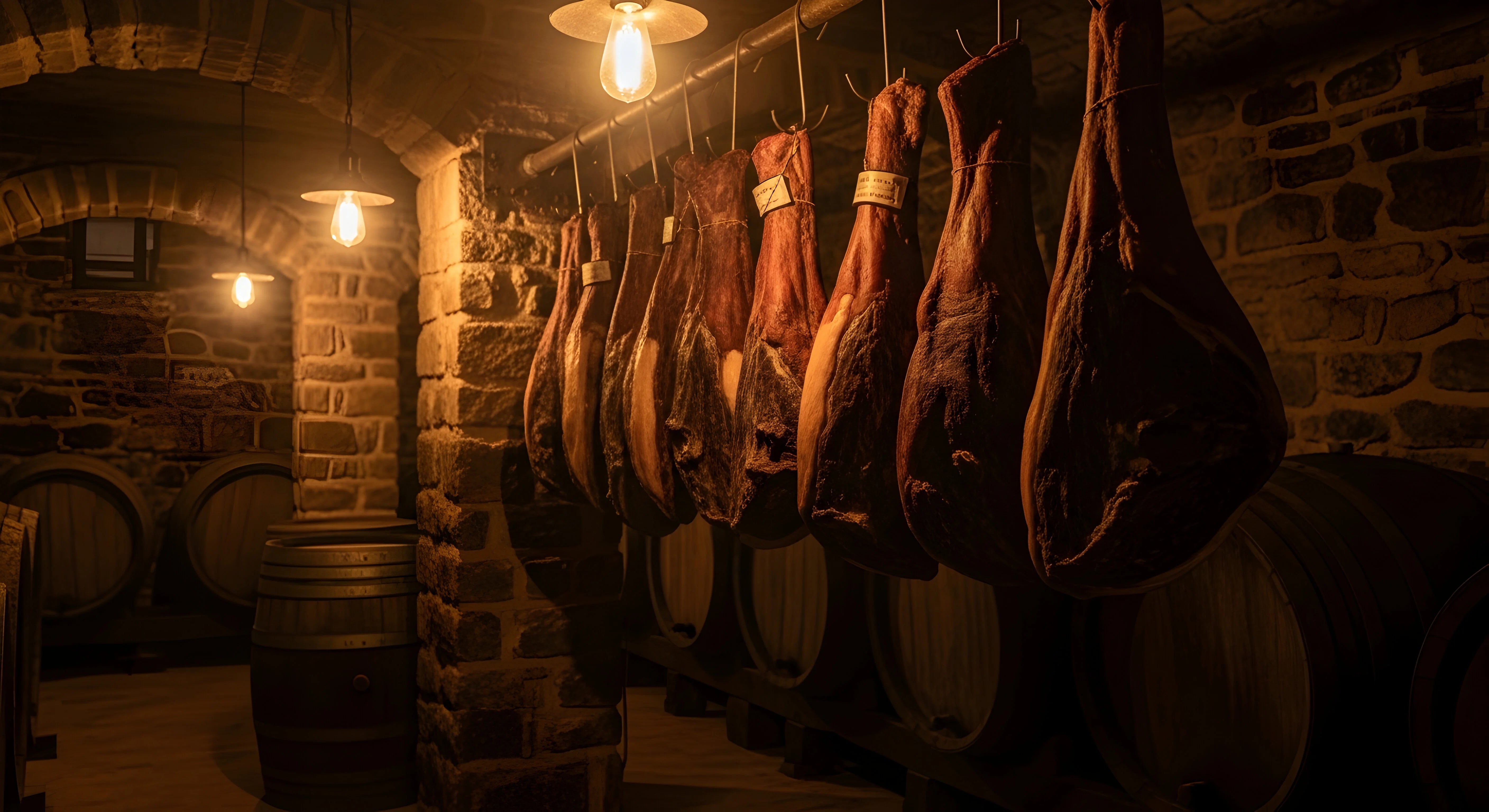
Natural air drying
In times before electricity and refrigeration, natural air drying was one of the first, if not the first, method for preserving meat for extended periods. This necessity for preservation ultimately led, almost by accident, to the discovery of the dry-aging process.
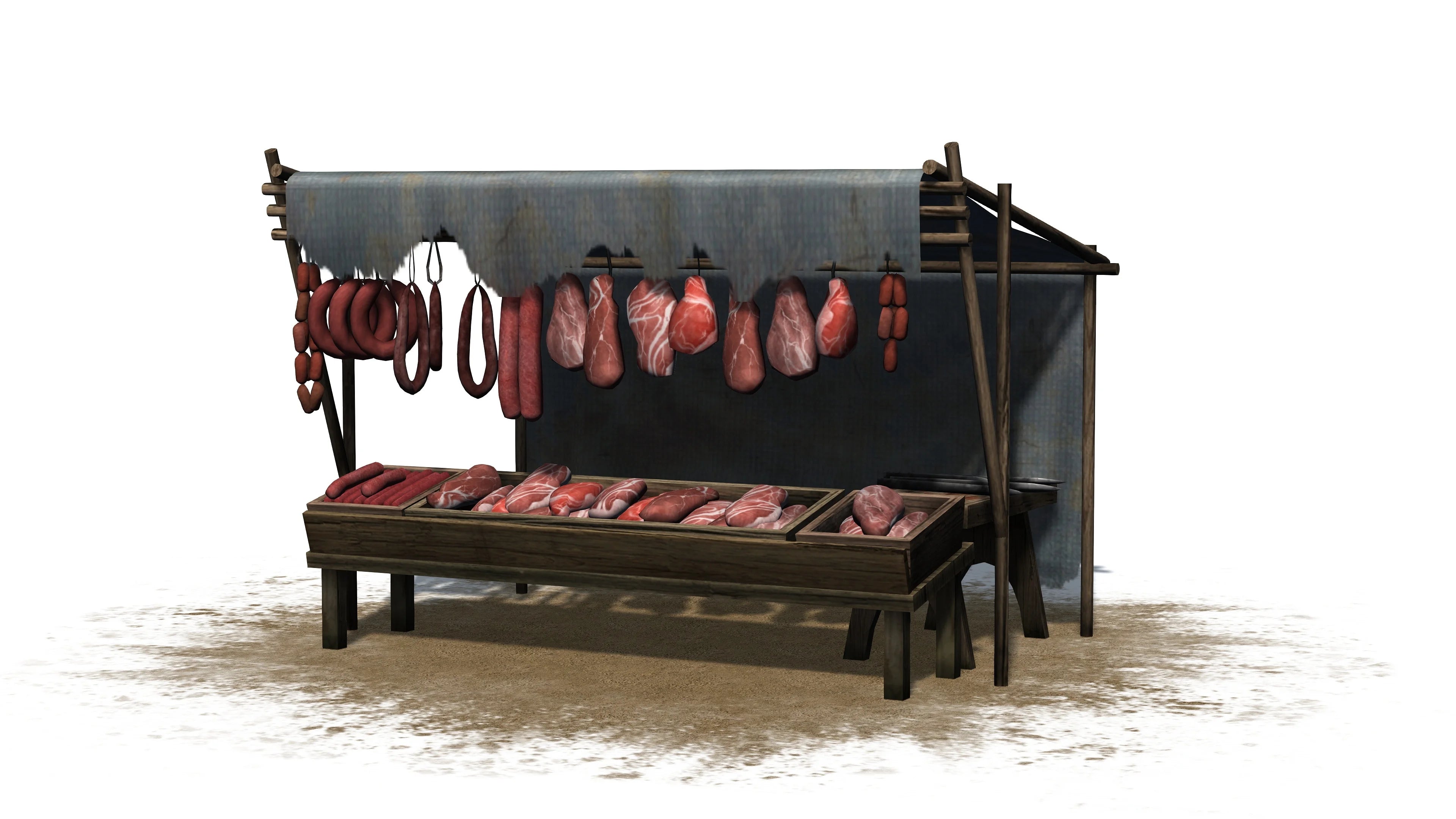
Medieval practices
In the Middle Ages, the process of dry aging was already practiced by butchers and chefs, although not yet under this name. Castles and large houses often had cool cellars where meat was hung to age. It was known that the longer the meat hung, the more tender it became and the richer its flavor developed.
Revolution of the American meat markets and modernity
Resurgence in the 21st century
With the emergence of meat markets in the United States in the 19th century, dry-aging became more popular and systematic. As is still the case today, the meat was often refrigerated and hung for several days. This was primarily for logistical reasons: Slaughtering now took place in slaughterhouses rather than directly at the consumer's premises, meaning the meat could only be processed later. To prevent spoilage, the meat was first refrigerated.
Due to refrigeration and rigor mortis, which sets in in cattle, for example, no more than ten hours after slaughter, the meat initially becomes hard and inedible. Therefore, aging is necessary to make it more tender and edible again. This principle was recognized many centuries ago, and slaughter was moved to the colder season. This allowed the carcasses to hang during the cool winter months and be processed gradually.
With the introduction of modern refrigeration, this rhythm changed, and slaughtering became possible year-round. From wet aging, which is now common in the industry because it is more cost-effective, albeit lower in quality, to dry aging on the bone, there are now numerous aging methods and options for refining the flavor of the meat during aging.
Butchers recognized early on that dry-aged meat was a premium product and began developing techniques and methods to refine the process. Advances in refrigeration technology in the 20th century made it possible to create controlled environments for dry aging. This allowed for more precise control of temperature and humidity, making the process safer and more consistent.
The first documented use of the terms "dry aging" or "dry aging" cannot yet be clearly established in historical sources. The term only appeared in the 20th century in the context of modern meat marketing and technology. Prior to that, the process was predominantly described under more general terms such as "aged meat." The formal term "dry aging" therefore represents a relatively recent linguistic development—even in English.
Dry aging has experienced a true renaissance in recent decades. Gourmets and chefs from all over the world have recognized the value of this traditional process. With the increasing focus on artisanal food production and the pursuit of authentic taste experiences, dry aging has regained importance. Added to this is a growing awareness of the quality and origin of food.
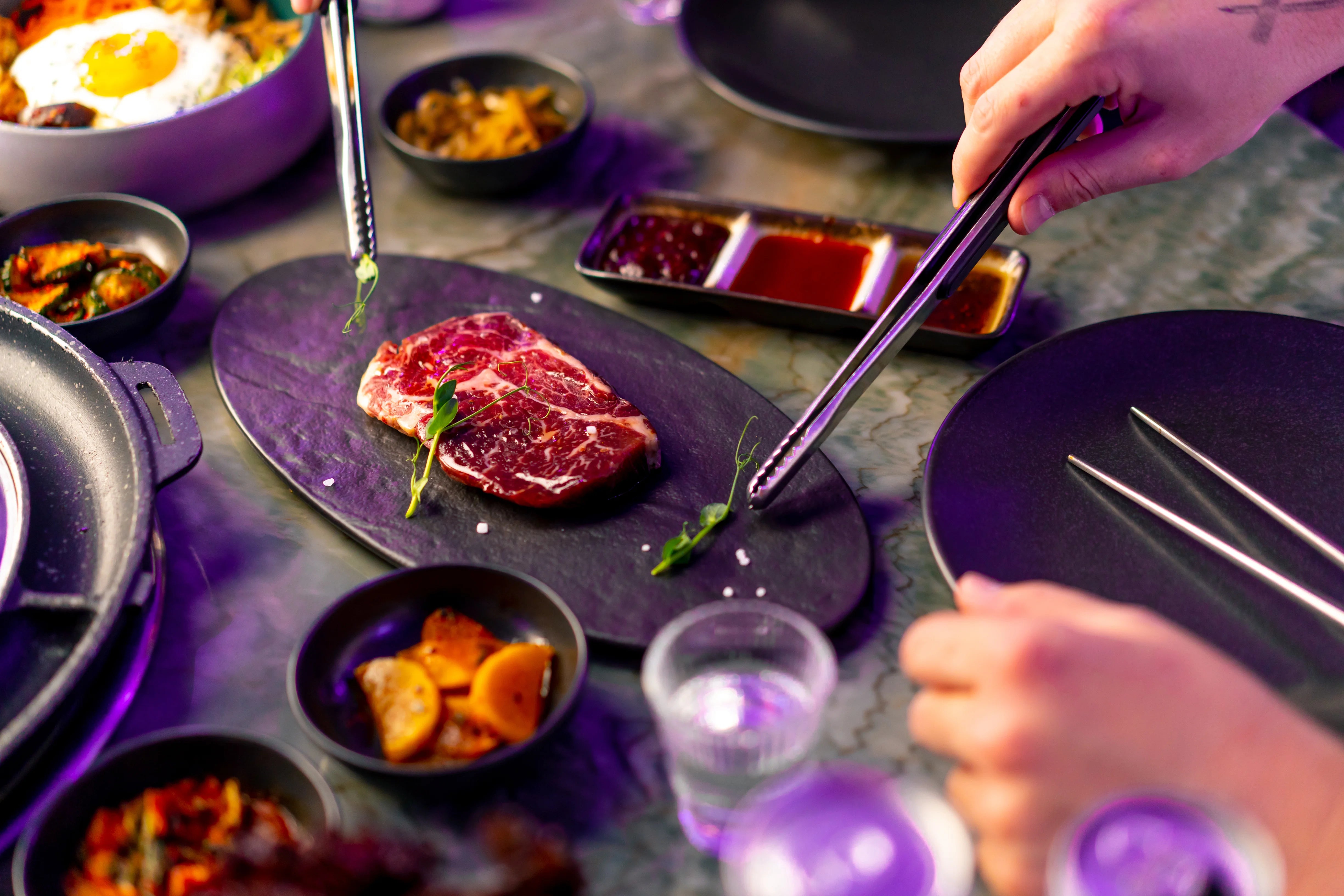
Regional differences
Although dry-aged meat has gained popularity worldwide, there are distinct regional differences. In some cultures, particularly in Asia, aged meat was traditionally less common but is gaining popularity. In Europe and North America, however, dry-aged meat has a longer history and is firmly established in the culinary landscape.
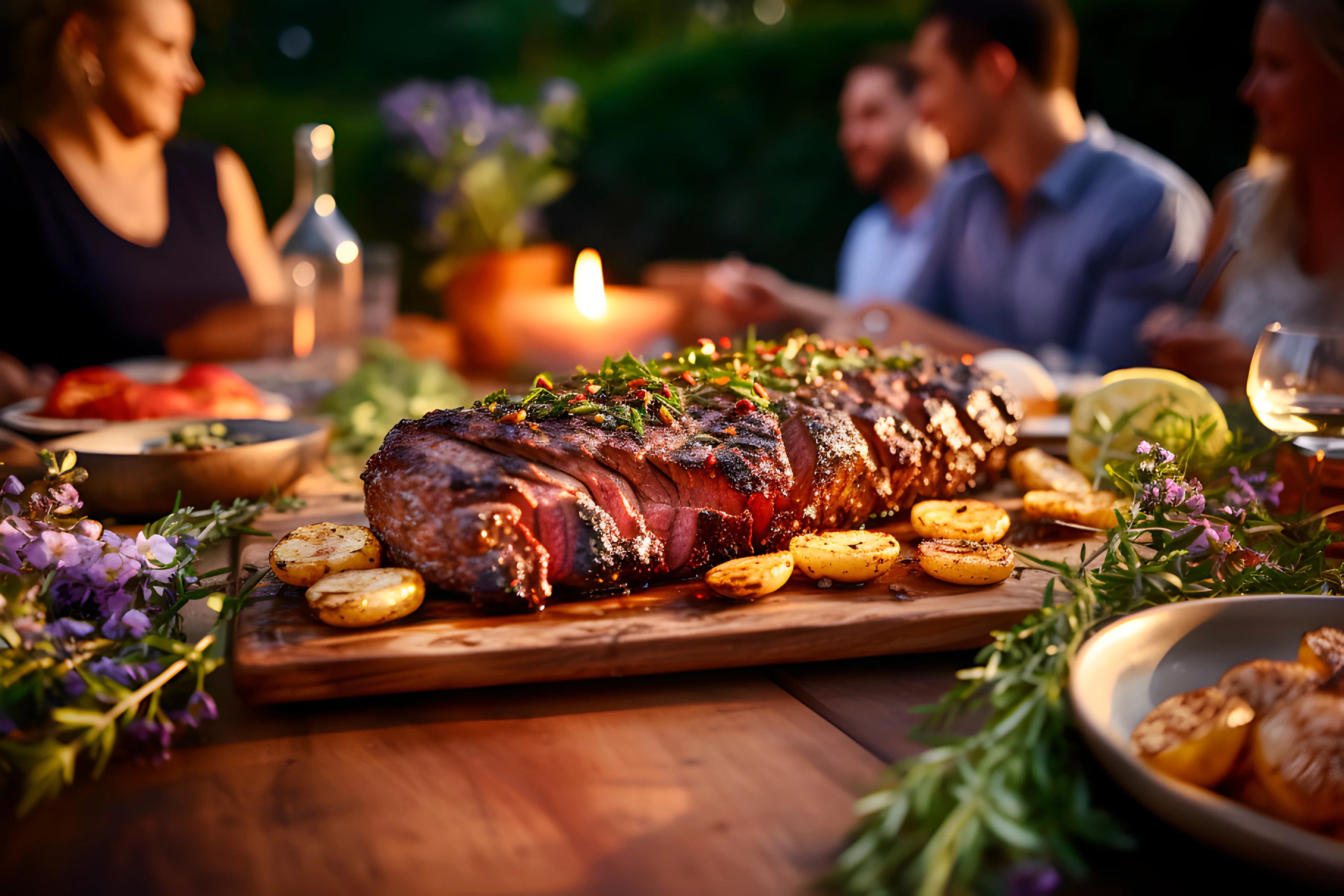
Restaurants and steakhouses
Restaurants and steakhouses have played a pivotal role in introducing and popularizing dry-aged meat. Many gourmet restaurants offer it as a premium option, and this has helped increase consumer awareness and demand.
Regional differences
Although dry-aged meat has gained popularity worldwide, there are distinct regional differences. In some cultures, particularly in Asia, aged meat was traditionally less common but is gaining popularity. In Europe and North America, however, dry-aged meat has a longer history and is firmly established in the culinary landscape.
Restaurants and steakhouses
Restaurants and steakhouses have played a pivotal role in introducing and popularizing dry-aged meat. Many gourmet restaurants offer it as a premium option, and this has helped increase consumer awareness and demand.


Dry-aged meat and healthy eating culture
Dry-aged meat is produced through a traditional aging process that uses no artificial additives, flavors, or preservatives. Consuming dry-aged meat is generally associated with a more conscious approach to food. It thus represents a healthy, slow-paced, pleasure-oriented diet that prioritizes quality over quantity.
Fast food, on the other hand, is often prepared with the primacy of efficiency, speed, low prices, and standardized production. Industrial processing, the use of additives, and rapid preparation are paramount. The result is a lack of complexity in flavor, a higher content of saturated fat, salt, and sugar, and a low content of valuable micronutrients .
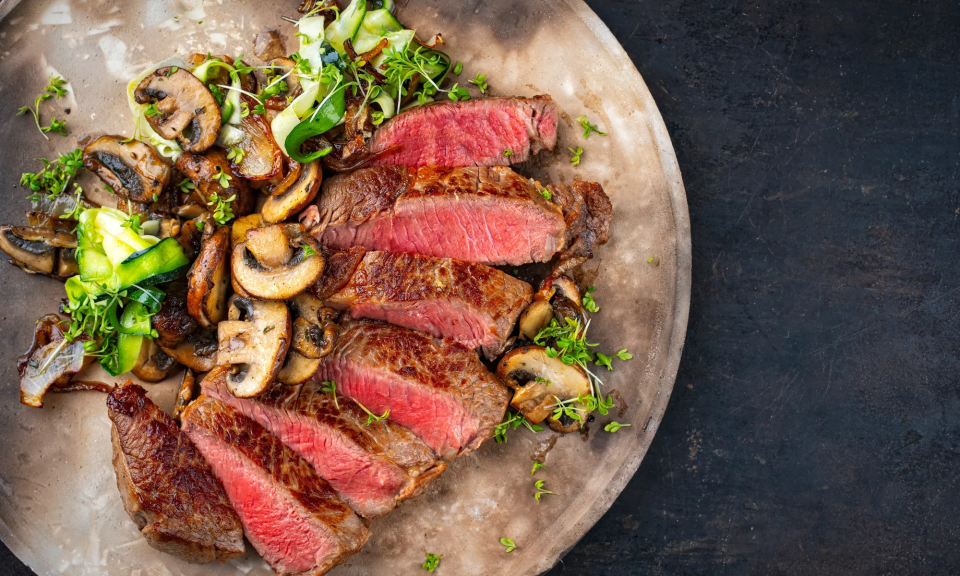
Dry-aged fillet
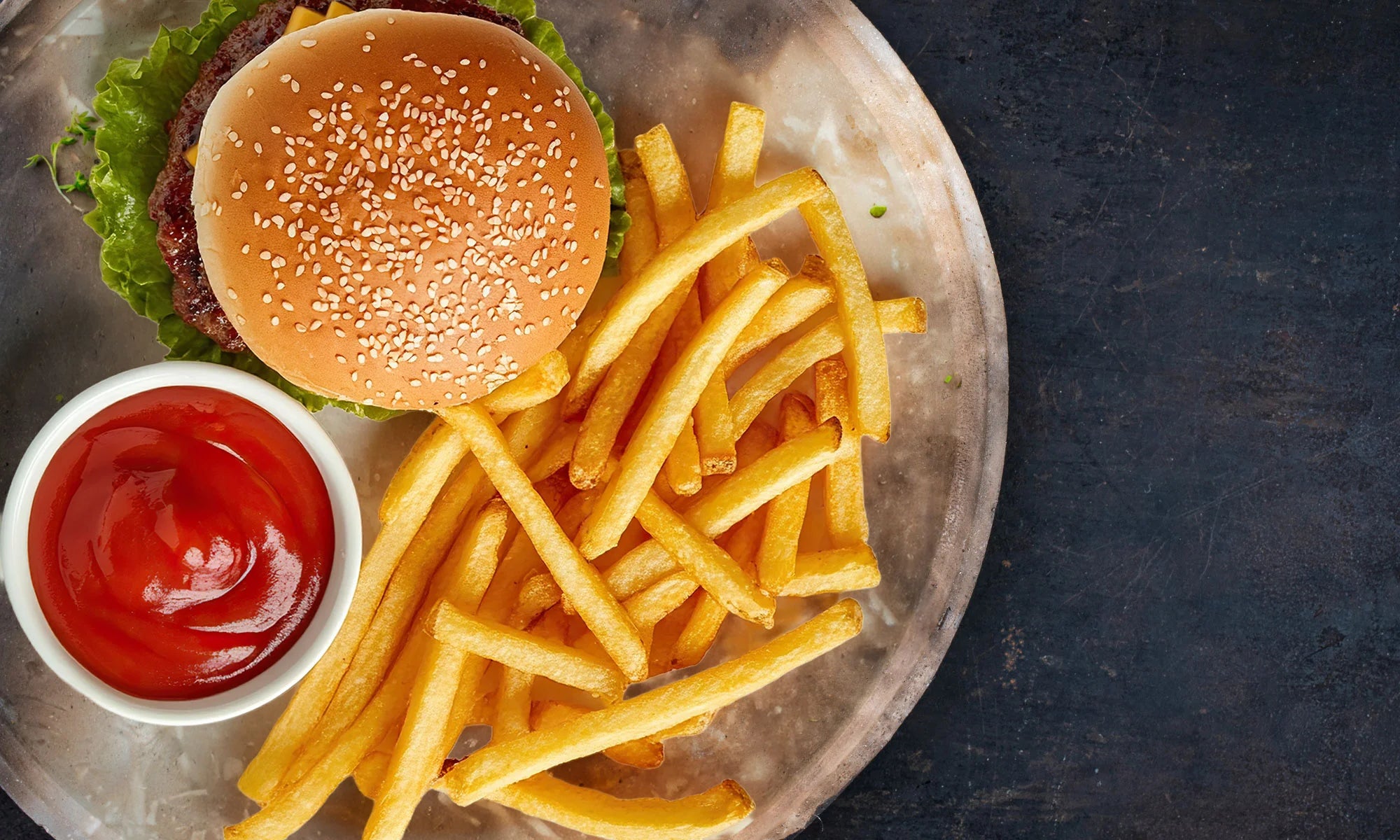
Hamburger with fries
What our customers say
Marie
Top quality! We order regularly and have had nothing but good experiences so far. The meat quality is top-notch. My husband has been grilling beef for years and is very critical. We've had the dry-aged organic steaks , tomahawk , porterhouse steak , and the soup kit several times.
Henry S.
Simply divine. Ordered online, received the next day, well chilled. The meat is top quality!
Dirk K.
What can I say? Top-notch steaks. Super tender and flavorful. Delivery was super-punctual and very well chilled. This won't be the last time I buy from here 😋👍
Get it now directly from our dry-aged shop!
Conclusion
From necessity to gourmet experience
What once began out of necessity has evolved into an art form prized by chefs and gourmets alike. Dry aging connects us to the past and reminds us of the origins of food preparation, when time, patience, and craftsmanship were central. The history of dry aging is a fascinating chapter in the evolution of the culinary arts. It's a reminder of how profoundly time and tradition can influence the taste and quality of food.
FAQ
The history of dry aging – explained clearly, concisely, and understandably.
Who invented dry aging?
Who invented dry aging?
You can find out who invented dry aging in the section Pre-industrial Age: Necessity and Chance
Is dry-aged meat healthy?
Is dry-aged meat healthy?
Whether dry-aged meat is healthy or not, you can find out in the section Dry-Aged Meat and Healthy Eating Culture
When was dry aging invented?
When was dry aging invented?
In the section Natural Air Drying, we address the question of when dry aging was invented – and why this question is not so easy to answer.
